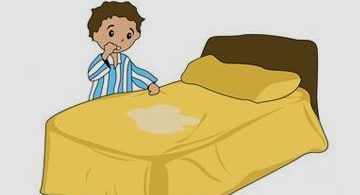Author:
Dr Jeenu Joseph
Asst. Professor, Dept. of FMT
Yenepoya Homoeopathic Medical College and Hospital,
Naringana, Mangalore, Karnataka
DEFINITION
Rash in the diaper region in early infancy is known as diaper rash.
It may involve convex surfaces such as buttocks, scrotal sac, mons pubis or inner side of thigh. Alternatively only flexures are affected
Also called: irritant contact dermatitis
TYPES
- Contact dermatitis
- Seborrhoeic dermatitis
- Candida infection
CAUSES
- Friction
Most diaper rash is caused by friction that develops when sensitive baby skin is rubbed by wet diapers. This results in a red, shiny rash on exposed areas.
- Irritation
The skin under the diaper gets red from irritant such as feces, urine or cleaning agents. Irritation can be caused by the diaper or by the acid in urine and bowel movements. This rash appears red in the area where the diaper has rubbed and is normally and seen in the folds of skin
- Candidal infections
The rash of a candida infection, also known as fungal or yeast infection, usually has a bright, beefy red appearance and is very common after the use of antibiotics. Candida is a fungal microorganisms that is typically found in warm, moist places such as the mouth.
- Allergic Reaction
The rash may be a reaction to a diaper wipes, diapers, laundry detergent, soap, lotion or the elastic in plastic paints.
- Introduction of new foods: changes in baby’s diet can also increases the frequency of stools.
SYMPTOMS
- Diaper rash is characterized by the following:
- Skin signs- diaper rash is marked by red, tender- looking skin in the diaper region- buttocks, thighs and genitals.
- Changes in baby’s disposition
- Baby seems more uncomfortable than usual, especially during diaper changes. A baby with a diaper rash often fuses or cries when the diaper area is washed or touched.
PREVENTION
- Changes diaper often- Remove wet or diety diapers promptly, if your child is in child rare, ask the staff members to do the same.
- Rinse baby’s bottom with warm water as part of each diaper change
- You can use a sink, tub or water bottle for this purpose. Moist wash clothes, cotton balls and baby wipes can aid in cleaning the skin, but be gentle. Don’t use wipes with alcohol or fragrance. If you wish to use soap, select a mild, fragrances free types.
- Gently pat the skin dry with a clean towel or let it air dry.
- Devil scrub your baby’s bottom. Scrubbing can further irritate the skin.
- Don’t overtighten diaper. Tight diapers prevent airflow into the diaper region which sets up a moist environment favourable to diaper rashes. Tight diaper can also cause chafting at the waist or thighs.
- Give your baby’s bottom more time without a diaper
- Exposing skin to air is a natural and gentle way to let it dry
- After changing the diaper, wash your hands well
- Hand washing can prevent the spread of bacteria or yeast to other parts of your baby’s body, to you or to other children.
MANAGEMENT
- Diaper should be made of single layer of porus soft cloth
- Use of impervious plastic diaper covers for the nappies should be avoided
- Diapers should be worked with mild soap and rinsed thoroughly
- Synthetic detergents should be avoided
- In ammoniacal diaper should be dipped in vinegar and then dried.
MANAGEMENT OF ACUTE RASH
Acute rash should be managed with cool wet compresses (using 1 teaspoonful of salt in a pint of water) intermittently for 2 or 3 days.
HOMOEOPATHIC MANAGEMENT
Constitutional approach helps in immunity development and thereby prevents further relapsing and complications. A well selected drug considering the mental and physical generals with characteristic particulars along with milestones, miasms, and other such factors is very essential for the effective treatment of this condition.
Example; A case of master .abc reported to the opd on 2/03//2016 with the history of recurrent rashes in both the thighs since 9 months on and off. The rashes use to appear almost every 2 months , they followed allopathic and ayurvedic treatment with temperorary relief .
SECTORAL APPROACH:
The acute rash can be effectively managed using an acute totality. It is very essential in the acute phase of the disease were the intensity is very high. Some of the well indicated remedies are mentioned below.
HEPAR SULPH
When baby is generally extremely chilly and very sensitive in being uncovered
Draper rash tends to become infected very quickly
Child is sensitive to cold and touch to the affected area
He prefer warmth
GRAPHITES
When skin is red, dry, cracked and very itchy
There is honey like discharge that is initially sticky and becomes crusty
Child has skin eruptions mostly on folds of the skin and may suffer from eczema
MEDORRHINUM
Skin red, shiny and the rash is often caused by candida
Tendency to sleep in a knee chest position
Very restless and over sensitive to pain
SULPHUR
Very hot and their skin is very delicate and becomes red hot, dry and itchy easily, especially around the anus after a stool
Rash is worse after a bath and the child dreads being washed
Child prefers cold water and does not like warm water and warmth in general
He gets worse at night and in a warm bed
RHUS TOXICODENDRON
When the skin is red, dry, swollen and very itchy
Vesicular suppurative forms
Glands swollen
Burning eczematous eruptions with tendency to scale formation
CONCLUSION:
Diaper rash is a common clinical condition in early infancy. Early detection and prevention is very essential in the management of diaper rash. Homoeopathy can give rapid, gentle and permanent cure in this condition with the help of law of similia. The mode of treatment and selection of remedy should be based on considering the intensity, duration and genera condition of the patient following the basic principles of Homoeopathy. Palliative/ suppressive treatments can lead to further complications.





